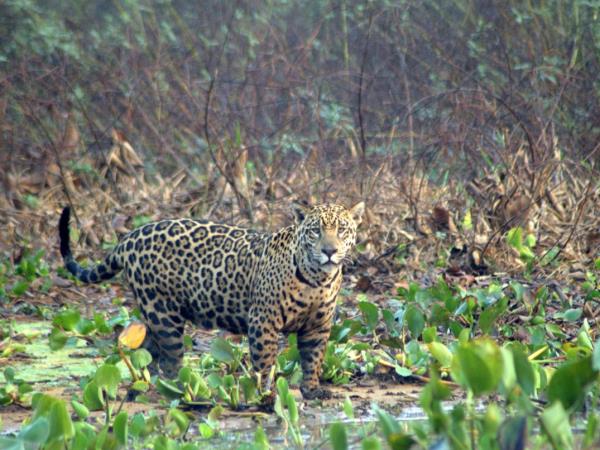It's World Ranger Day on 31 July
Posted on
|
The 31st July is a special day in the calendar for wildlife protection. World Ranger Day commemorates Rangers killed or injured in the line of duty. And it celebrates the amazing work Rangers do around the world to protect the natural world. The event is organised by the International Ranger Federation which works to raise awareness of and support the critical work rangers do. Its membership comprises of 63 ranger associations from 46 countries on 6 continents. It seeks "to empower rangers by supporting their national or state ranger organizations, or assisting in the establishment of local ranger associations in countries where they do not currently exist". You can find out more about it here World Rangers Day gives us all a chance to show our support and appreciation for the amazing men and women who defend wildlife on the front line of conservation. For over 30 years, the David Shepherd Wildlife Foundation has been standing with the world’s rangers every day. This morning, I received an email to remind me of the way in which rangers work to protect wildlife and how the charity supports them. I hope they will forgive me for relaying their email to you; but it does sum up well the different types of work rangers are involved with. Types of wildlife ranger include the following: Wildlife Rangers watch over wildlife. They may care for young orphaned elephants until these wonderful majestic animals can re-join a release herd. Some keep wildlife safe, often risking their own lives against the poachers. Community Rangers raise awareness amongst local communities to make sure they understand how protecting wildlife can be beneficial; and also helping them live alongside them. Some rangers have created women’s groups, making and selling crafts, so that locals have an alternative income. Intelligence and Investigation Rangers disrupt illegal wildlife trade routes and eliminate poaching hotspots. They work day and night against the poachers. They are intelligence-led enforcement units, who are putting their lives on the line every day to protect wildlife. Veterinary Rangers help advise how best to look after vulnerable animals and give them a second chance at life
About 90% of wildlife caught in snares are simply left to rot. Snares are just pieces of wire, shaped in a loop and anchored down. They are cheap and easy to make - and virtually impossible for animals to escape from. As animals struggle to escape, the result is that the wire grows tighter. Wounds get deeper. The animal suffers a long, agonising death. The David Shepherd Wildlife Foundation funds ranger patrols in Zambia, Zimbabwe and Uganda. Every day, these rangers remove thousands of traps and snares. Rangers report that as a result, they are now finding just one or two snares and traps whereas before, they would have removed hundreds. This makes the area much safer for wildlife. The equipment used to make snares and traps are turned to good use for other purposes and crucially the money earned from them is put to fight poachers and make life safer for wildlife. You can help support these brave rangers by giving to the David Shepherd Wildlife Foundation’s ongoing Appeal. Your help will enable the charity to train and equip more rangers to patrol these areas and you'll also help destroy the traps and snares found so that wildlife can't get trapped in them. Donate by 12th September 2017, and a kind supporter will match the first £10,000 in donations. They will do this until the September date or until the £10,000 is reached, whichever happens first. You can use GiftAid in the UK to your unmatched donation. Donate here to the David Shepherd Wildlife Foundation's Appeal |
